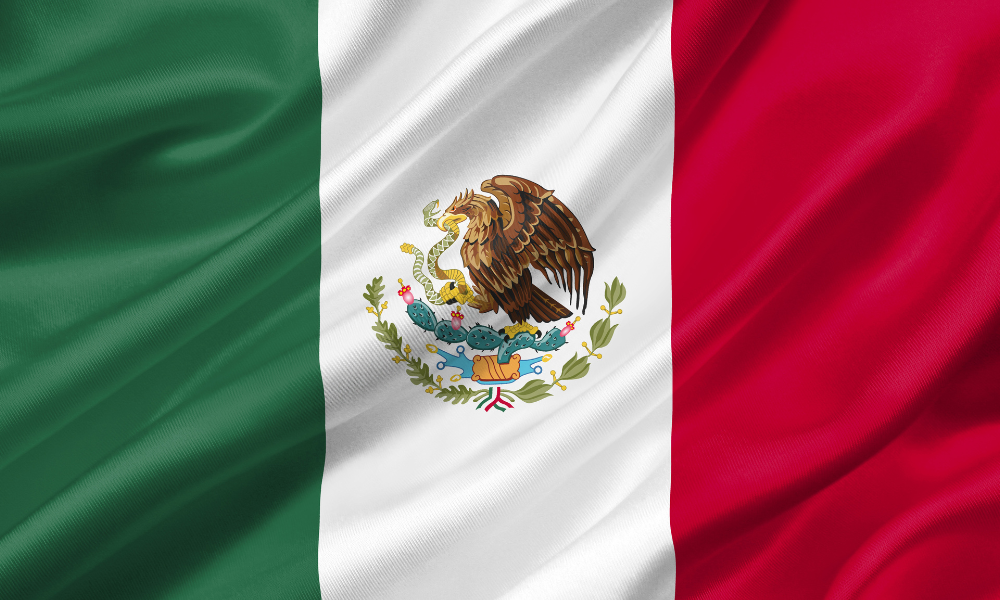Developments in Aboriginal law in 2022 were mostly forward looking. That is, there are cases proceeding and pending before Courts. These have the potential for significant changes and are to be watched closely as they are decided.
Indigenous Laws and Governance
One of the more complex and contentious questions of Aboriginal rights is the scope and applicability of Indigenous laws and their relationship to settler laws. Courts are now beginning to grapple with that question.
Learn the difference between aboriginal law and indigenous law in Canada here.
Child Welfare
Historically, and tragically, Indigenous children have been and continue to be removed from their families and communities at highly disproportionate rates. In the 19th and most of the 20th century, this meant forcibly attempting to assimilate Indigenous children to settler society. Residential schools are only the most egregious example of this, but the removal of Indigenous children from their families and communities continues today in the child welfare system.
More recently, after more than a decade of litigation before the Canadian Human Rights Tribunal (CHRT), the CHRT concluded that the resources provided for Indigenous child and family services were systemically and significantly less than the resources provided for the same services provided for non-Indigenous children. The CHRT issued repeated orders finding discrimination, and ruling that Canada was not complying with its orders. The matter continues to await a final resolution, after the signing of an agreement in principle reached in 2021 between Canada and the First Nations Child and Family Caring Society and Assembly of First Nations which promised $20B over five years to remedy the discrimination.
These events form some of the backdrop to Canada enacting An Act respecting First Nations, Inuit and Métis children, youth and families (the “Act”) in 2019. That legislation did a number of things: (1) established national standards for the provision of child and family services to Indigenous children; (2) explicitly recognized that Aboriginal groups had an inherent right of self-government in relation to child and family services, and that this was constitutionally protected; and (3) provided that in some circumstances, a law of an Indigenous group had the force of a federal law, and prevailed over any inconsistent provincial law.
The government of Québec challenged the constitutionality of the Act. The Québec Court of Appeal (2022 QCCA 185) decided the matter in early 2022. The Court adopted the view that Aboriginal peoples have a right to self-government which flows from their original sovereignty, and that this right is constitutionally protected. The Court rejected the idea that Aboriginal self-government (at least in respect of child welfare) was incompatible with the federal-provincial division of powers. The Court ruled that the constitutional division of powers between Canada and the provinces was not comprehensive, and left open the possibility of rights flowing from other sources of law.
The result of this is that an Indigenous child welfare law would prevail over federal or provincial legislation unless the government can establish that interfering with such a law passes the strict test for a justified infringement of a right. This goes further than a Court has gone before in recognizing a right of Indigenous self-government, and could become a milestone in reconciling Indigenous and settler jurisdictions.
Nonetheless, the QCCA decided that the particular structure of the Act was unconstitutional. It had attempted to extend federal paramountcy to an Indigenous law. The Court thought this was inconsistent with the structure of the constitution, and upset the balance between federal and provincial powers.
I have two observations about this. First, the constitutional protection of the right of Indigenous governance over child welfare, which the Court did accept, may have at least as strong an effect of making Indigenous laws prevail over provincial laws as would the federal paramountcy provision in the Act. Second, the Court did accept that federal legislation could incorporate by reference the laws of another jurisdiction, which would give them federal force and indeed make them paramount over provincial laws. The Court interpreted the Act as not doing that, but rather trying to impermissibly extend federal paramountcy to Indigenous laws. Perhaps it would be possible with a different drafting technique to achieve the intent of the Act.
The Supreme Court of Canada heard an appeal of this case in December 2022, and reserved judgement on it (Attorney General of Québec, et al. v. Attorney General of Canada, et al.). The eventual decision could bring some clarity to these issues.
Meanwhile, Indigenous groups are enacting their own child welfare legislation and negotiating coordination agreements for funding and coordination of services, pursuant to the legislation and some groups have already begun exercising jurisdiction over child and family services. There is increasing interest in exercising jurisdiction over child welfare services, despite the uncertainty cast by the Quebec government’s appeal.
Elections
The case Dickson v. Vuntut Gwitchin First Nation will be heard by the Supreme Court of Canada in February 2023. In that case, the Vuntut Gwitchin have an election law that anyone elected to the First Nation’s Council must reside in the First Nation’s community (Old Crow). This residency requirement was part of the Vuntut Gwitchin Constitution. The Constitution had been adopted in accordance with the Vuntut Gwitchin Final Agreement with Canada (which is a modern treaty, protected by the Canadian constitution) and a self-government agreement. Ms. Dickson lived in Whitehorse, and her nomination for councillor was rejected because of her residency.
Ms. Dickson commenced litigation in the Supreme Court of Yukon, seeking a declaration that the residency requirement was inconsistent with the equality guarantee (s. 15) of the Canadian Charter of Rights and Freedoms (“Charter”), and therefore of no force and effect. This challenge relies heavily on Corbiere v. Canada (Minister of Indian and Northern Affairs), [1999] 2 SCR 203, which had found unconstitutional a section of the Indian Act that required band members to be “ordinarily resident” on the band’s reserve in order to vote in band elections. What is different in Dickson is that it is an Indigenous law that is in question.
There are a number of important issues to be canvassed in the Supreme Court of Canada: (1) does the Canadian Charter even apply to a provision of the Vuntut Gwitchin Constitution? (2) If so, is the residency requirement inconsistent with s. 15 of the Canadian Charter? (3) If so, is the residency requirement saved by s.1 of the Charter as being “demonstrably justified in a free and democratic society”? (4) In any event, is the residency requirement shielded from being found inconsistent with the Canadian Charter by reason of s. 25 of the Charter which provides that Charter guarantees are not to be construed to derogate from rights that pertain to Aboriginal peoples?
The Supreme Court of Yukon did apply the Charter to the Vuntut Gwitchin residency requirement, but found that with one exception, it did not infringe equality rights. The Court also ruled that in the alternative, again with one exception, s. 25 of the Charter shielded the residency requirement.
The Yukon Court of Appeal varied this somewhat. The Court also applied the Charter to the Vuntut Gwitchin residency requirement, but found that it did infringe equality rights. However it ruled that s. 25 of the Charter shielded the residency requirement (in total, without making the exception made by the lower Court).
The most foundational question is whether the Canadian Charter even applies to an Indigenous law. By its own terms, the Charter applies to the legislatures and governments of Canada and Canadian provinces. Case law has interpreted this to extend to bodies exercising governmental functions through delegated authority, such as municipalities. It has also been applied to First Nations when they are exercising delegated federal powers. However, the situation of the Vuntut Gwitchin is different. The residency requirement was not adopted through a delegated authority, but rather (as found by the Supreme Court of Yukon) through an exercise of an inherent right of self-government. Further, the Vuntut Gwitchin constitution was adopted in accordance with a modern treaty and a self-government agreement, neither of which provided for the application of the Canadian Charter (unlike many other modern treaties and self-government agreements).
This question is a crucial one for the reconciliation of Indigenous laws and settler laws. Indigenous laws (generally speaking) frequently place a greater emphasis on collective rights than do settler laws, which tend to have a framework more rooted in individual rights. Should not Indigenous nations receive respect for their differing frameworks and be able to act on them? Why should Indigenous laws (especially ones, as here, that are in relation to matters internal to an Indigenous nation) be subordinated to a settler law framework? What is the point of reaching treaties and self-government agreements with the Crown if once an Indigenous body starts acting in accordance with them, the substance of Indigenous laws can be trumped by the Canadian Charter? The Supreme Court’s upcoming decision in Dickson might shed some light on these questions.
It is also possible the Supreme Court will approach the matter through the lens of s. 25 of the Charter (as did the Courts below). It would appear that s. 25 was intended to be an internal mechanism in the Charter to shield collective Indigenous rights from the mostly individual rights in the Charter. The section has not often been interpreted by courts, and added clarity to how it functions could also be of benefit to the development of the law.
Indigenous Law and Common Law
A very interesting case came out of New Zealand about the relationship of Indigenous (Maori) law and the common law. R. v. Ellis, [2022] NZSC 113, arose in an unusual context: an appeal of a criminal conviction of a non-Indigenous person after the death of the person convicted. The question was the procedural question of whether even to embark on deciding the case, since it had become moot. None of the parties to the case raised Maori law – rather, the Court brought the matter to their attention.
The Supreme Court of New Zealand analysed how common law incorporated local customary law, and adapted that mechanism to modern New Zealand circumstances. In the result, it concluded that Maori law was part of the common law, it informs the development of the common law, and continues to develop independently of the common law. It recognized Maori law as “the first law of Aotearoa [New Zealand],” and that in this case it provided important values and perspectives for developing or modifying common law.
It is interesting that the discussion in New Zealand has progressed far beyond debates about whether some space can be carved out of the common for Indigenous law to flourish, and has reached the point of recognizing Indigenous law as fundamental to the law of New Zealand, and as providing assistance in developing common law. It is all the more remarkable that this took place in a case with no Indigenous parties.
New Zealand cases about Indigenous rights frequently discuss Canadian law at some length (and did so in the Ellis case). Canadian Indigenous rights law has sometimes drawn on New Zealand law, so perhaps Ellis will have some impacts on the development of Canadian law.
Aboriginal Title and Rights
There are cases coming up about Aboriginal title and rights. Both Chippewas of Nawash Unceded First Nation et al v. Canada (AG) et al, to be heard by the Ontario Court of Appeal in May 2023, and Thomas et al v. Rio Tinto Alcan Inc. et al., to be heard by the BC Court of Appeal in June 2023, raise the question whether Canadian law is able to recognize Aboriginal title to the beds of navigable waters. In addition, Thomas also raises the issue of whether and how a First Nation can sue a private party in tort for infringements of Aboriginal rights.
Crown Fiduciary Duty and Treaties
The case Ontario (AG) v. Restoule et al will be heard by the Supreme Court of Canada in fall 2023. This raises the question of how treaties are to be enforced. The treaties in question were the Robinson Huron and Robinson Superior treaties of 1850, by which numerous First Nations “surrendered” large tracts of land to the Crown. As part of the treaties, the Crown agreed to pay a perpetual annuity to the First Nations. After extended negotiations, a rather complex clause about annuities was agreed: a fixed sum, plus a clause that the annuity would be augmented from time to time. Certain factors were listed for how much the augmentation would be. The case centred on that obligation. In 1875 the annuity was increased for the first and only time. It was obvious, and accepted by both the trial and appeal Courts involved, that the annuity needed further augmentation. The case is about what is the appropriate legal theory of liability, and what the appropriate remedy would be. The trial Court had found a breach of fiduciary duty, while the Court of Appeal disagreed and found a breach of treaty and a breach of honour of the Crown instead.
The significance of these differences in approaches lie in how a breach might be enforced, and what remedies might be available. So far, the only remedy obtained for a breach of honour of the Crown has been a declaration. The idea of basing a remedy in honour of the Crown comes from Manitoba Métis Federation Inc v. Canada (AG), [2013] 1 SCR 623. In that case the Court granted a declaration that “the federal Crown failed to implement the land grant provision set out in s. 31 of the Manitoba Act, 1870 in accordance with the honour of the Crown,” but declined to order any other remedy that would compel the Crown to act in any particular way. The Ontario Court of Appeal in Restoule, however, rejected the idea that the honour of the Crown was not justiciable, or was procedural only, and suggested that the treaty right was indeed enforceable. The Court did not explain precisely what this meant nor what the procedure for enforcement would be.
The remedies were also left unspecified, which is not surprising since remedies had been reserved for a later phase of the trial. However, important matters are now left uncertain. A breach of fiduciary duty has well known (although flexible) remedial consequences. It is not known what, if any, remedies, beyond a declaration, flow from a breach of the honour of the Crown. The Court of Appeal seemed to suggest that there could be a financial judgement to compensate for the breach, but that it might be different from the financial remedies that would flow from a breach of fiduciary duty. The Court did not elaborate on this. These are issues that would benefit from the attention of the Supreme Court of Canada.
Cumulative Impacts of Development
The BC Supreme Court decided Yahey v. BC in 2021. This was an important corollary to the 2005 Supreme Court of Canada case Mikisew Cree First Nation v. Canada (Minister of Heritage), 2005 SCC 69. In Mikisew, the Court interpreted Treaty 8, which included both a hunting right and a provision that the hunting right did not apply to lands “taken up” for “settlement, mining, lumbering , trading or other purposes”. Mikisew ruled that Treaty 8 First Nations had a right to be consulted and, if appropriate, accommodated when lands were to be so “taken up”. Mikisew also noted that if the time comes where so much land is “taken up” that no meaningful right to harvest remains, that would amount to a prima facie treaty infringement which would require justification if it were to be permitted at all. Generally, provincial governments have interpreted Mikisew as allowing them quite a free hand in authorizing developments. The obvious question, however, remains: at what point would this threshold of “no meaningful right” be passed? Further, how could this be determined in the event of a lengthy series of instances of “taking up” land, which individually would not pass the threshold, but which could have a cumulative effect? This was the situation presented by Yahey. In Yahey the Court was indeed satisfied that the province of BC had taken up lands over a period of many years (by allowing industrial development at an extensive scale) to the point that there were no longer sufficient and appropriate lands in the Blueberry River First Nation’s territory to allow for the meaningful exercise by Blueberry of its treaty rights. The Court therefore found a breach of Treaty which was not justified. The Court prohibited the province from authorizing further activities which would breach Blueberry’s treaty rights. This was a strong signal to provinces to be more respectful of treaty rights. The Court also directed the parties to negotiate to establish mechanisms to manage the cumulative impacts of industrial development on Blueberry’s treaty rights.
What is new is that in January 2023, BC and Blueberry River reached such an agreement. It provided for $200 million for environmental restoration, an ecosystem management approach for future land-use planning, limits on new oil and gas developments, wildlife co-management, and oil and gas revenue sharing. Four other BC First Nations reached similar agreements with the province. Meanwhile, cases similar to the Yahey case are pending in other provinces.
This promises to be an area of law to watch for developments.





